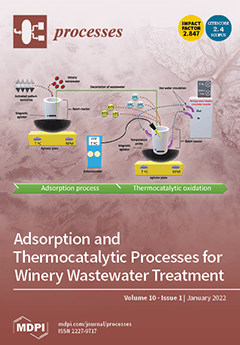In this study, the inhibitory activities against human monoamine oxidases (hMAOs) were evaluated using a library of 195 endogenous lichen fungi from Ukraine. Among them, the extract ELF68 of the endogenous fungus
Rosellinia corticium from the lichen
Pseudevernia furfuracea (L.) Zopf. exhibited the
[...] Read more.
In this study, the inhibitory activities against human monoamine oxidases (hMAOs) were evaluated using a library of 195 endogenous lichen fungi from Ukraine. Among them, the extract ELF68 of the endogenous fungus
Rosellinia corticium from the lichen
Pseudevernia furfuracea (L.) Zopf. exhibited the strongest inhibitory activity against hMAO-A. Using the activity-guided method, (
S)-5-methylmellein (5MM) was isolated from the extract and had an IC
50 value of 5.31 µM for hMAO-A with a lower potency for hMAO-B (IC
50 = 9.15 µM). Compound 5MM also moderately inhibited acetylcholinesterase (IC
50 = 27.07 µM) but very weakly inhibited butyrylcholinesterase and β-secretase. Compound 5MM had a K
i value of 2.45 μM and was a reversible competitive inhibitor of hMAO-A. A molecular docking study predicted that (
S)-5MM showed higher binding affinity for hMAO-A (−6.8 kcal/mol) than hMAO-B (−6.4 kcal/mol). Its isomer, (
R)-5MM, exhibited lower binding affinities for hMAO-A (−6.6 kcal/mol) and hMAO-B (−5.2 kcal/mol), compared to (
S)-5MM. The
S-form interacted with hMAO-A through hydrogen bonding with the Phe208 residue (distance: 1.972 Å), while the
R-form interacted with the Asn181 residue (2.375 Å). The results of an in silico pharmacokinetic analysis indicated that 5MM did not violate Lipinski’s five rules and showed high gastrointestinal absorption and blood–brain barrier permeability. These results suggest that 5MM can be considered a candidate in the treatment of neuropsychiatric disorders, such as depression and cardiovascular disease.
Full article





